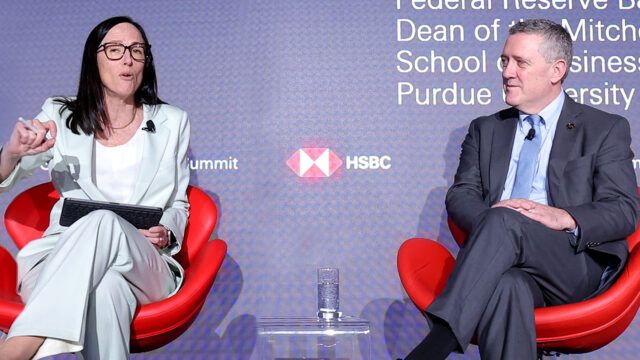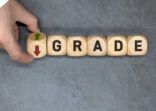James Bullard, the former president of the Federal Reserve Bank of St. Louis, said that there is enough data for the Federal Reserve to begin cutting interest rates now.
“The first cut is a momentous occasion so for that reason, I think they want to be careful. But if I was still on the committee, I’d be advocating…there’s enough data in hand right now to make the first move,” he told delegates at the inaugural HSBC Global Investment Summit in Hong Kong on Tuesday.
Bullard’s comments come despite the fact that futures traders in recent weeks have lowered their estimates on when the Fed will begin cutting interest rates and how many cuts they will make on the back of stronger-than-expected economic data.
According to data compiled by Reuters on Monday, the prospect of a first 25bp cut in June stood at 49%, down from 57% a week earlier.
On Friday, the Labor Department reported that US job growth in March outstripped expectations as the unemployment rate fell to 3.8% from 3.9% in February, fuelling further concerns about the impact this would have on CPI data due to be published on Wednesday.
Bullard, a known hawk, acknowledged that the grapple with inflation remained in place but underscored that this was only the first cut and the risk remained that the Fed would tip the economy into recession if it did not act soon.
“This disinflation that has occurred over the last year, 200bp, this is a gigantic move in inflation. We’re not used to these kinds of moves and then to have the economy booming at the same time; it’s a good problem to have,” he said.
“So in a way everything’s going swimmingly for the FOMC [Federal Open Market Committee]. That’s why they don’t feel like there is any urgency. At the same time, you have to be careful here that you don’t end up with too high a policy rate at the moment you hit 2% inflation because you’d be taking unnecessary risk driving inflation below the 2% target. You’d be taking unnecessary risk of a huge slowdown in the real economy.”
Overall, he said that he expected inflation to remain more volatile than from the period between 2010 and 2019, but he remained bullish on the economic outlook, drawing parallels between the current period and the late 1990s, which saw a huge expansion in the economy in spite of higher interest rates.
“If you’re asking me what is the parallel between the late 1990s, it might be technology. There was a big technology boom, a productivity boom in the US in the second half of the 90s, which really drove everything, and it certainly looks as if we are on the precipice of a productivity boom again,” he said.
“If you just look coldly at the data, I don’t think it’s quite here yet, but certainly the enthusiasm around artificial intelligence and other technologies suggests that it might not be too far-fetched to think that the US would go into a high productivity growth regime and this would drive growth similar to what happened in the second half of the 90s.”
He also expressed disquiet over the inability of either of the two main political parties in the US to tackle the spiraling deficit and noted that the best outcome for November’s election to achieve fiscal discipline would be a divided Congress.
















